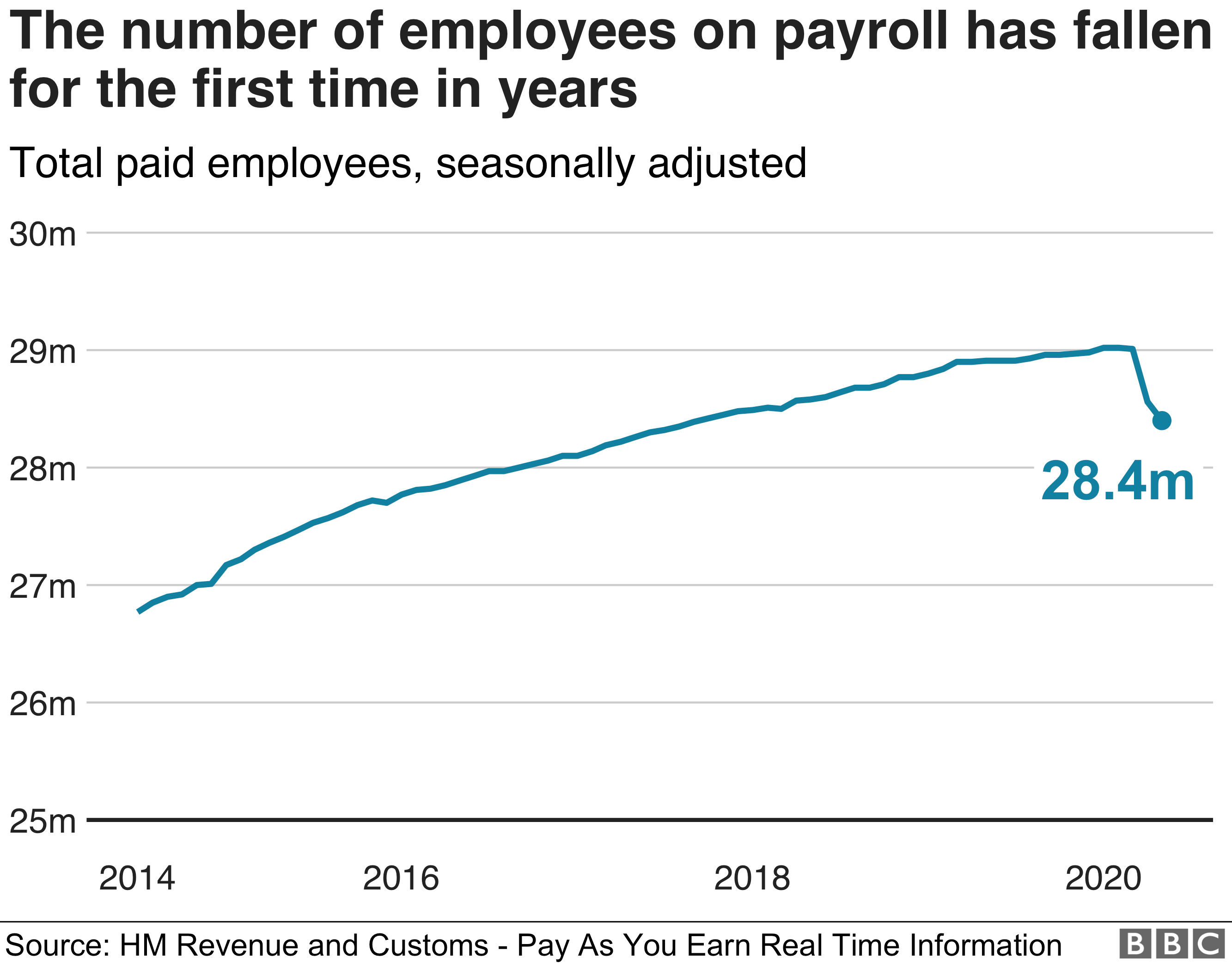
The job vacancies have also fallen.
The labour market is likely to get worse before it gets better.
Nigel Holland
The number of workers on UK payrolls dived more than 600,000 between March and May, official figures suggest.
Meanwhile, the number of people claiming work-related benefits – which includes the unemployed – was up 126% to 2.8 million.
The early estimates reflect the impact of around six weeks of lockdown in which large parts of the UK were shut.
But economists say the full effect on employment will not be felt until wage support schemes end in October.
“The slowdown in the economy is now visibly hitting the labour market, especially in terms of hours worked,” said Jonathan Athow, deputy national statistician for economic statistics at the Office for National Statistics (ONS).
“Early indicators for May show that the number of employees on payrolls were down over 600,000 compared with March.”
Separate figures published by HMRC on Tuesday showed that a total of 9.1 million workers have now been furloughed.

Overall, the UK unemployment rate held steady at 3.9% in the three months to April as massive wage support schemes brought in by the government prevented job losses.
Reflecting this, the ONS said the total number of weekly hours worked in period had dropped to 959.9 million – down by a record 94.2 million, or 9%, on the previous year.
- NI unemployment more than doubles in two months
- Scotland’s unemployment rate highest in UK
- Number claiming benefits in Wales doubles
There was also a record fall in job vacancies between March and May to 476,000 – down 342,000 from the last quarter.

‘Weakened dramatically’
The figures come after large parts of the economy were shut down to fight coronavirus.
However, Capital Economics economist Ruth Gregory warned bigger unemployment rises were on their way.
“It was abundantly clear in every other indicator [other than the headline unemployment rate] that the labour market has weakened dramatically,” she said.
“Despite the apparent stability of the actual unemployment rate, the labour market data were still pretty awful. And some of this will surely start to filter through into the actual unemployment figures as the government’s job furlough scheme is wound down from August.”
Tej Parikh, chief economist at the Institute of Directors, agreed: “The furlough scheme continues to hold off the bulk of job losses, but unemployment is likely to surge in the months ahead.”
